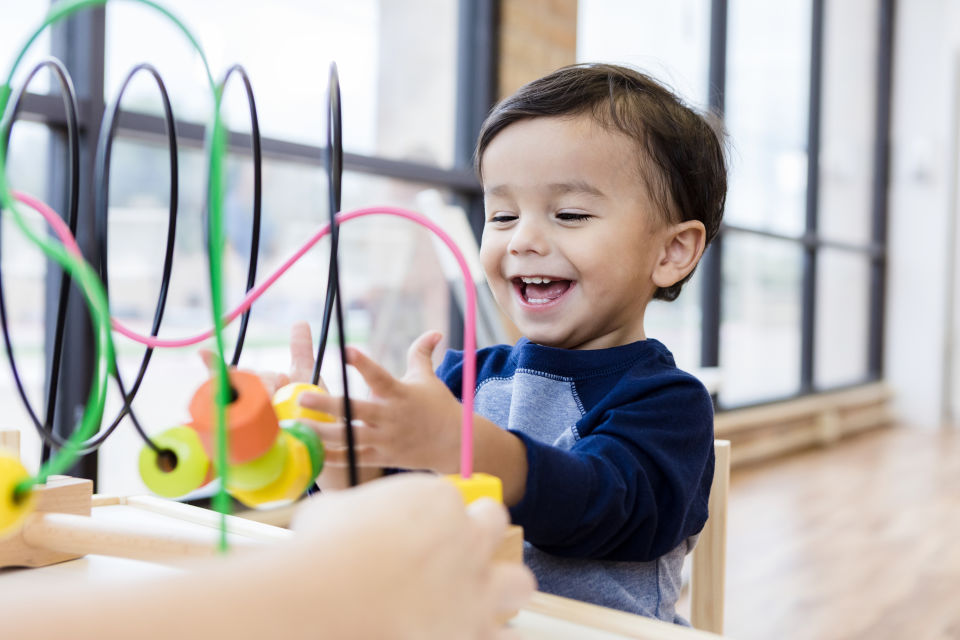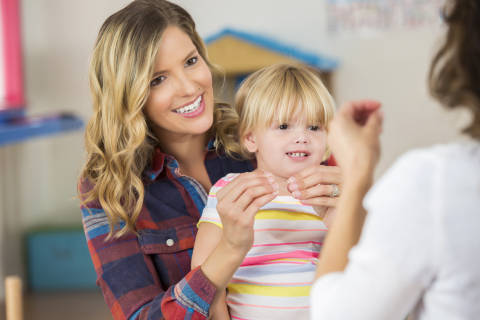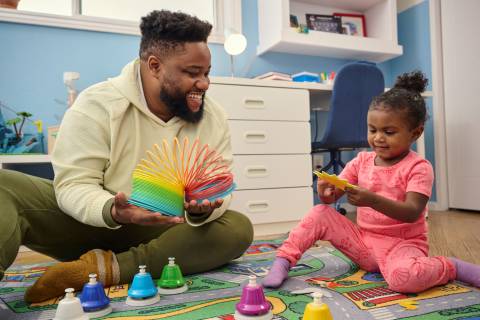Children benefit when they get to play by themselves while a parent is nearby. This is called independent play. See how independent play can help your child’s development, and learn some tips you can try out at home to get started.

What is independent play, and why is it important?
When children play by themselves while a parent is nearby, it’s called “independent play.” Independent play is great for a child’s development.
When children play by themselves, they really get to tap into their imaginations. Whether they are coloring, building with blocks, or making up adventures with their favorite stuffed animals, they get a big boost to their creativity.
Independent play can also help build confidence and the ability to solve problems. Playing alone gives children the chance to practice making choices, like what color crayon to use or where to put a block when building something. And if a choice doesn’t work out—if the building falls over because they made it too tall, for example—they get to practice figuring out what went wrong.
When do children start to play independently?
Children as young as age two can start to play independently, but they might not play as long as an older child. Two-year-olds can concentrate for about 5-6 minutes, while three-year-olds might be able to play for up to 8 minutes. As they turn four and five, they can play for about 10 minutes.
However, if your preschooler isn’t used to playing independently, try starting out with shorter amounts of time, like 5 minutes. Then, build your way up to longer independent play sessions.
How do I get my child to do independent play?
If independent play is new to your child, they may need some time to get used to it. For example, they may want you to join in on the fun at first. Or they may want to play only for a little bit. That’s OK.
Here are some tips to get started:
Set up a play space just for them. It doesn’t have to be a big area. Give them toys to play with other than a screen. This could include things like blocks, books, stuffed animals, puzzles, games, coloring supplies, or any other toy you have at home that’s safe for your child’s age.
Try playing with your child for a few minutes to kick off their playtime. Once you’ve played together for a while, let them know in a positive, upbeat voice that you’re going to let them play for a specific amount of time while you fold clothes, put away the dishes, or do another activity close by. Reassure your child where you are so they feel safe and secure.
Set a timer so they know how long they have to play. When the timer is up and your child is done playing, ask them questions about their playtime and let them tell you all about their fun adventures.






